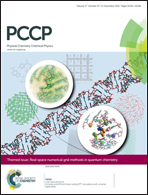Singular analysis and coupled cluster theory
Abstract
The primary motivation for systematic bases in first principles electronic structure simulations is to derive physical and chemical properties of molecules and solids with predetermined accuracy. This requires a detailed understanding of the asymptotic behaviour of many-particle Coulomb systems near coalescence points of particles. Singular analysis provides a convenient framework to study the asymptotic behaviour of wavefunctions near these singularities. In the present work, we want to introduce the mathematical framework of singular analysis and discuss a novel asymptotic parametrix construction for Hamiltonians of many-particle Coulomb systems. This corresponds to the construction of an approximate inverse of a Hamiltonian operator with remainder given by a so-called Green operator. The Green operator encodes essential asymptotic information and we present as our main result an explicit asymptotic formula for this operator. First applications to many-particle models in quantum chemistry are presented in order to demonstrate the feasibility of our approach. The focus is on the asymptotic behaviour of ladder diagrams, which provide the dominant contribution to short-range correlation in coupled cluster theory. Furthermore, we discuss possible consequences of our asymptotic analysis with respect to adaptive wavelet approximation.

- This article is part of the themed collection: Real-space numerical grid methods in quantum chemistry


 Please wait while we load your content...
Please wait while we load your content...